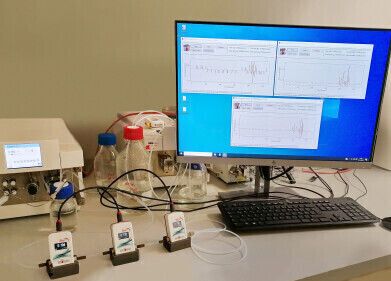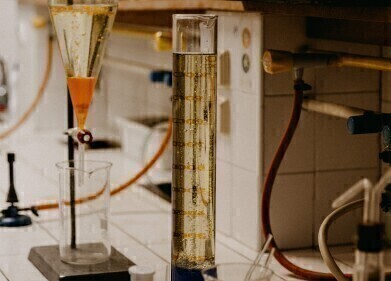Data Handling
The Benefits of Artificial Intelligence and Machine Learning in Analytical Research
Aug 23 2023
Current trends in chromatographic prediction using artificial intelligence (AI) and machine learning (ML) are enabling faster and more accurate predictions of chromatographic behaviours. AI and ML advancements will lead to enhanced method development, optimisation, and overall better efficiency.
One prominent trend is the integration of AI and ML algorithms into chromatographic software platforms. These platforms can predict optimal separation conditions, such as mobile phase composition, column selection, and gradient profiles, by analysing historical chromatographic data and complex interactions. This empowers chemists to streamline method development, reducing trial-and-error cycles and resource consumption. Additionally, AI-driven retention time prediction models are gaining popularity. By analysing molecular properties and experimental conditions, these models accurately estimate retention times, aiding in compound identification and peak tracking.
The emergence of deep learning techniques has also brought forth significant progress. Convolutional neural networks (CNNs) and recurrent neural networks (RNNs) can analyse chromatograms, identifying peaks, patterns, and anomalies with high precision. This assists in automated peak integration, deconvolution, and noise reduction, leading to improved quantification accuracy.
Furthermore, data fusion is a crucial trend in this field. Combining chromatographic data with data from other analytical techniques or sources enhances prediction accuracy and information extraction. Integrating spectroscopic, mass spectrometric, and NMR data into chromatographic models enables a more comprehensive understanding of complex samples.
Interdisciplinary collaboration is driving another trend. Chemists, data scientists, and software engineers are working together to develop hybrid models that combine domain knowledge with AI techniques. These models not only predict chromatographic outcomes but also provide insights into the underlying chemical interactions driving separation processes.
Despite these advancements, challenges remain. Data quality and quantity are critical for successful AI and ML applications. An ongoing trend is the creation of large, well-curated chromatographic databases that facilitate model training and validation. Additionally, ensuring model interpretability and robustness is essential, especially in highly regulated industries like pharmaceuticals.
In conclusion, AI and ML have ushered in a new era of chromatographic prediction, offering rapid, accurate, and cost-effective solutions to challenges in analytical chemistry. These trends are reshaping the way chromatographers approach method development, optimisation, and data analysis, with a strong potential to transform various industries reliant on precise compound separation and identification.
More information online
Digital Edition
Chromatography Today - Buyers' Guide 2022
October 2023
In This Edition Modern & Practical Applications - Accelerating ADC Development with Mass Spectrometry - Implementing High-Resolution Ion Mobility into Peptide Mapping Workflows Chromatogr...
View all digital editions
Events
ACS National Meeting - Fall 2024
Aug 18 2024 Denver, CO, USA
Sep 04 2024 Chiba, Tokyo, Japan
Sep 04 2024 University of Warwick, Coventry, UK
Sep 10 2024 Rockville, MD, USA
Plastics Recycling World Expo Europe
Sep 11 2024 Brussels, Belgium














